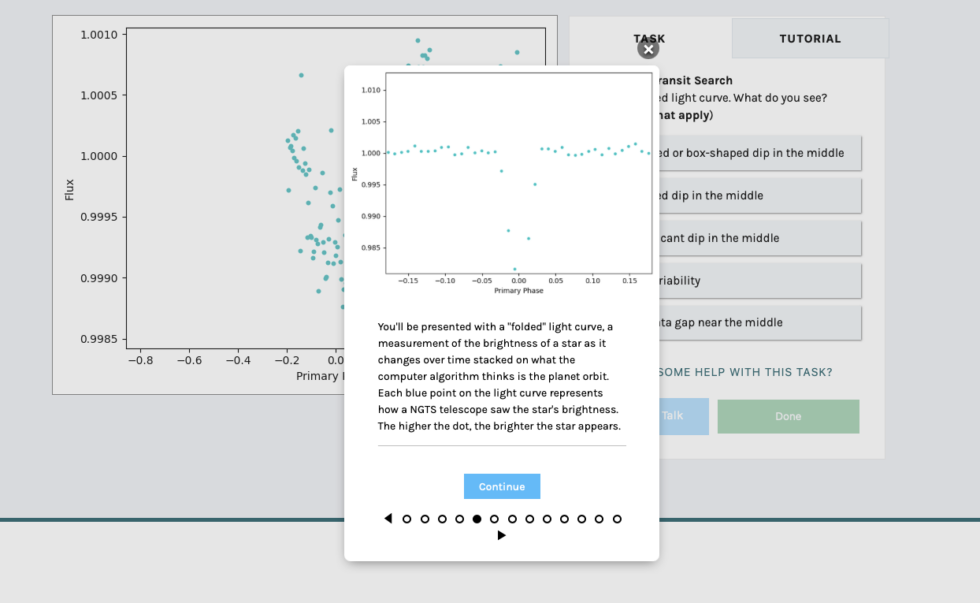If you ever wanted to help find new planets, now’s your chance

If you’ve ever wanted to search for distant worlds, your time has come. The team behind a planet-hunting telescope array called the Next-Generation Transit Survey (NGTS) is looking for help with the large volume of data the instrument has produced. The NGTS scans large areas of the sky with a collection of small, robotic telescopes to detect dips in stars’ light that are caused by a planet passing between the stars and Earth.
The team now has a lot of data, which it has sifted through using computers. But computers have difficulty distinguishing a likely planet from various sources of noise, so the researchers are asking the public to double-check the computers and provide a final call on what a signal is.
Public transits
One of the most successful means of searching for exoplanets has been the transit method, in which a telescope repeatedly observes the amount of light originating from a star. If a planet wanders in front of that star, the amount of light will dip slightly. These dips have a very stereotypical shape if you plot them over time in what’s called a light curve, with a fairly steep drop as the planet swings in front of the star, followed by a long, flat reduction.

But there are other phenomena that can cause similar-looking dips in a light curve, plus a bunch of factors that create noise that computers have a hard time distinguishing from a signal. For example, the equivalent of sunspots (sunexospots? exosunspots?) on other stars will rotate across the field of view, and many stars experience short-term variations in their activity. These things can combine to make for a noisy signal with numerous dips. In addition, the telescopes have regular periods of downtime in which they briefly stop observations, which also confuses the software analysis.
Finally, NGTS is on Earth and suffers from noise due to the atmosphere—something that the Kepler telescope did not have to deal with.
As a result of these difficulties, the NGTS team has many potential transits that have been flagged as interesting-looking by its software. But they need to be verified before they’re accepted as actual transits, and the NGST team simply isn’t large enough to do the work. So it has teamed up with the Zooniverse citizen science platform to get the public’s help.
What kind of dip is that?
Those interested in participating can navigate to the project’s page on the Zooniverse platform and click the button in the “Get started” section. If you’re a new user, this will start a tutorial that explains the different types of light curves flagged by computer algorithms. These include things like gaps in the data, a mischaracterized curve, and the chaotic mess caused by stellar variability.


You’ll also have to make calls on whether a light curve has a flat bottom or is V-shaped. This is harder than it may sound because the NGTS doesn’t have the same frequency of imaging as nice, neat Kepler curves. Instead, as seen above, the curve has fewer individual data points in it, and the atmosphere produces more scatter between them.
But don’t worry too much about getting it wrong. Past Zooniverse projects have typically had multiple volunteers scan each image to ensure they didn’t put too much weight on any one individual’s judgment. And anything that looks interesting will ultimately be examined by someone who does astronomy for a living.
https://arstechnica.com/?p=1806965